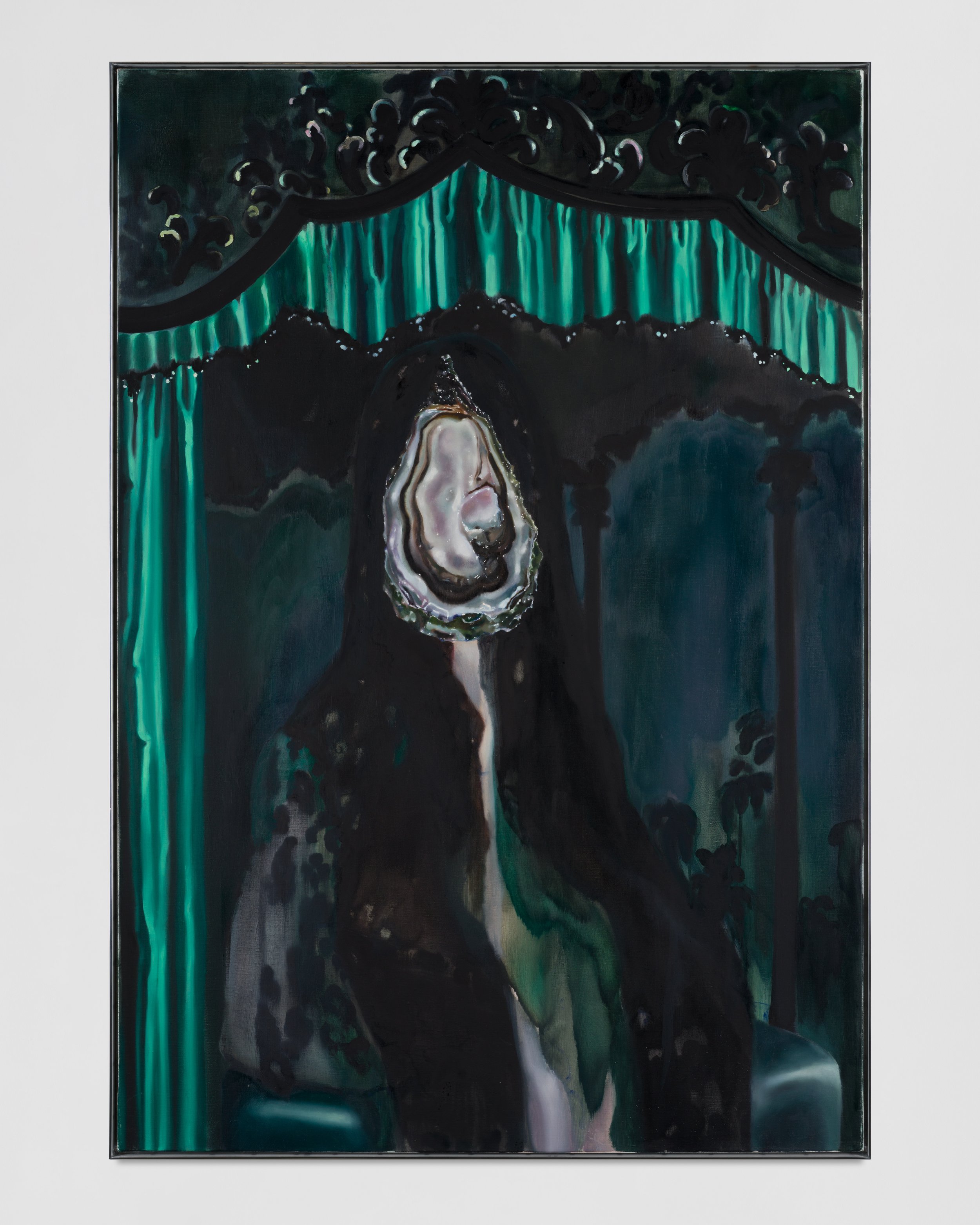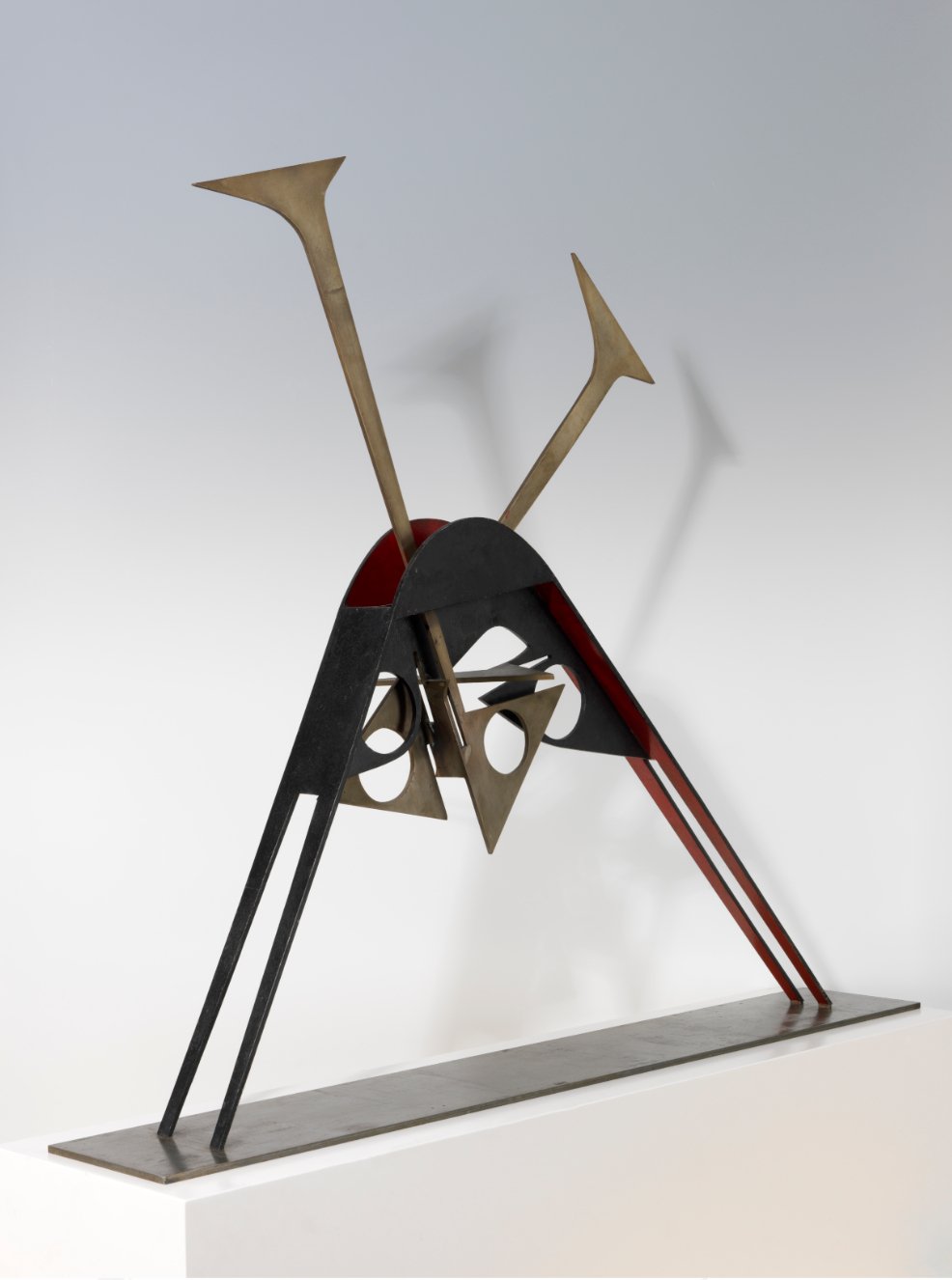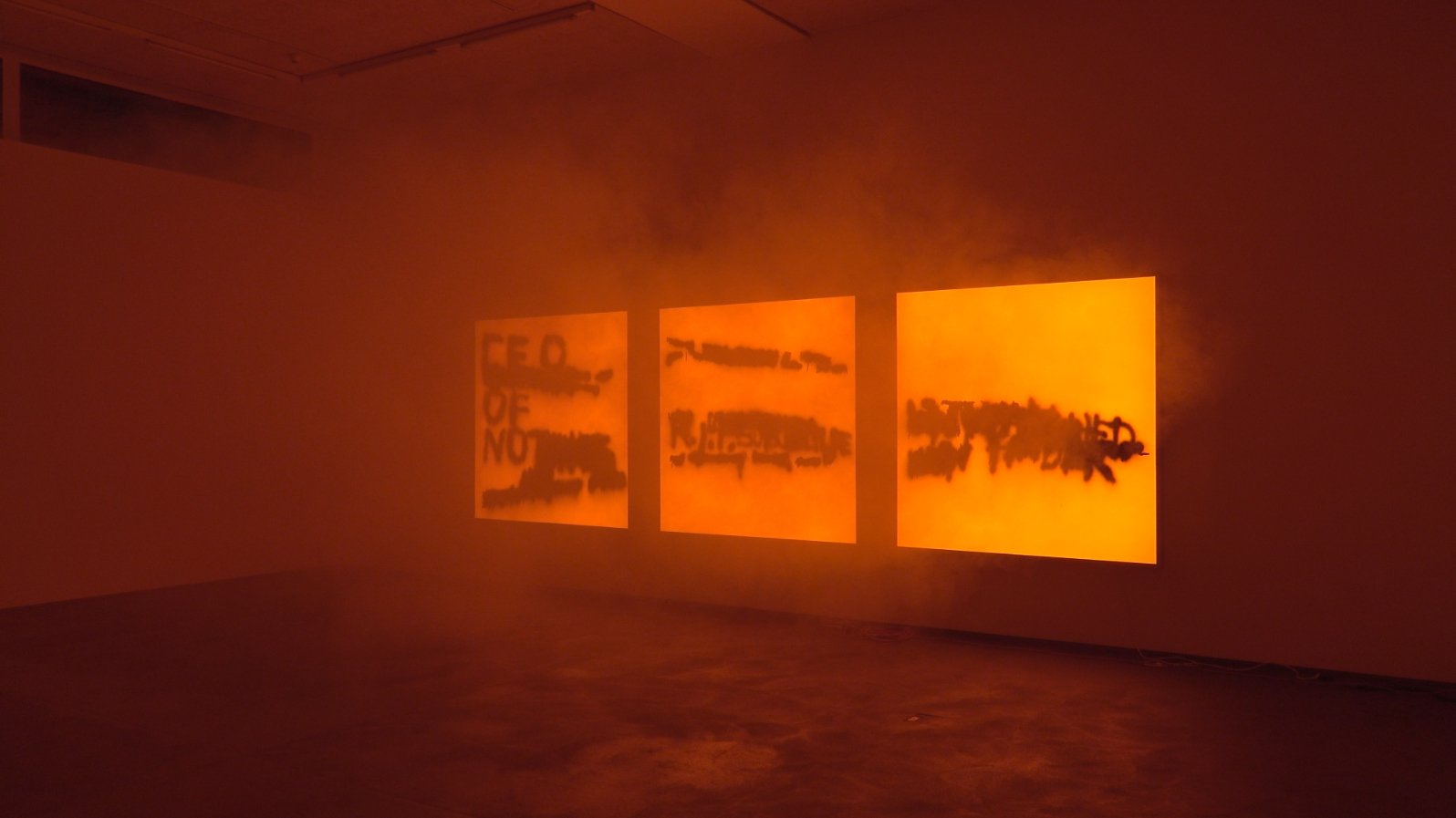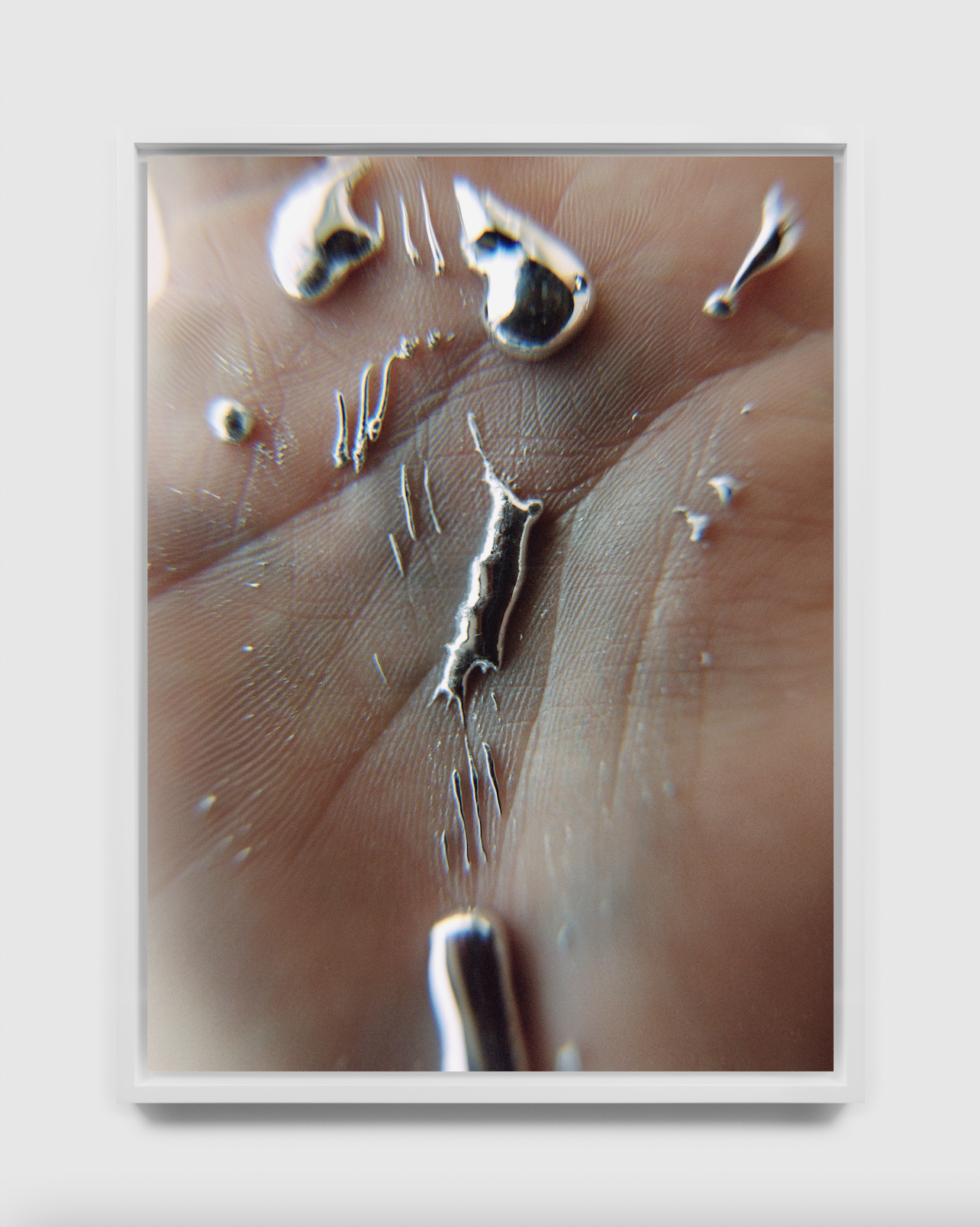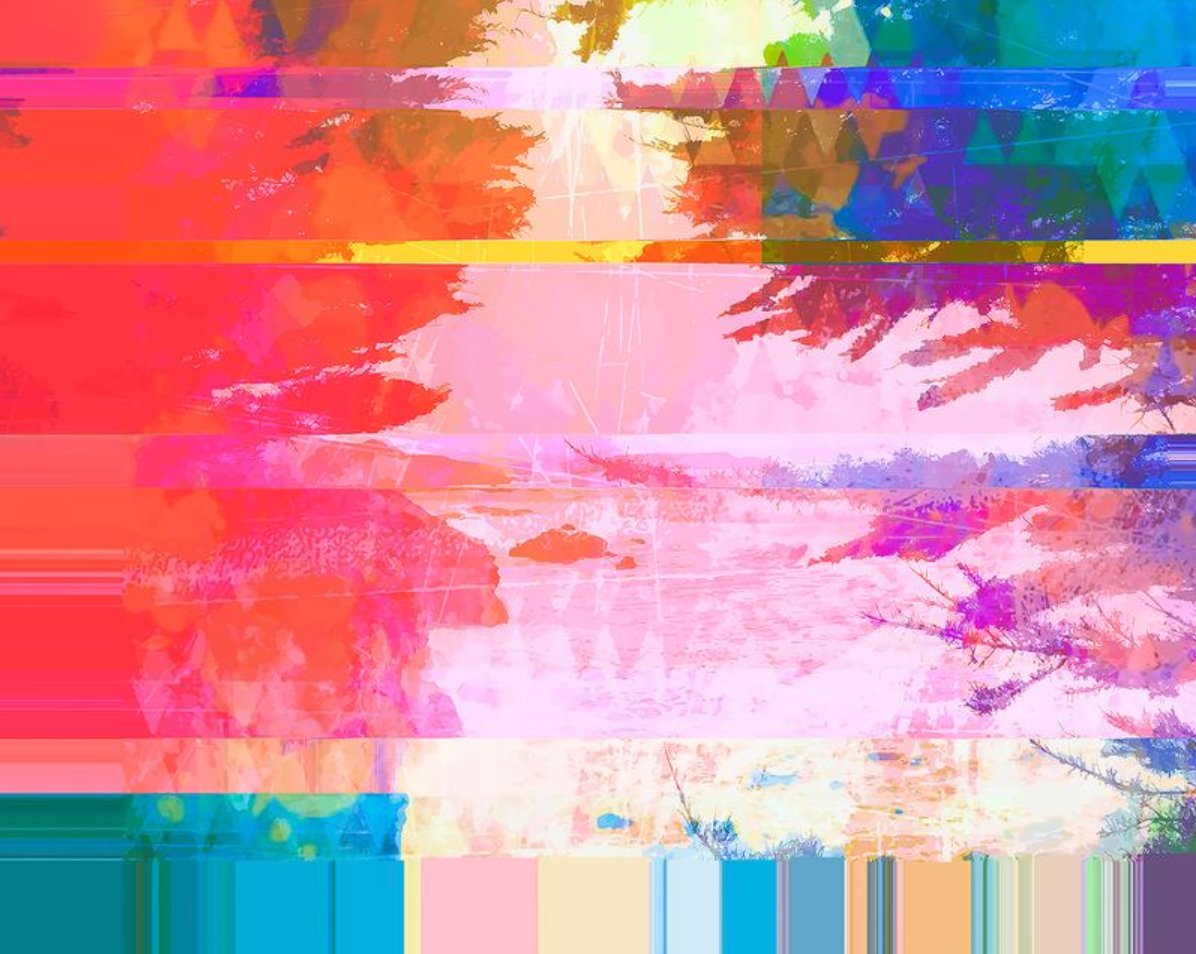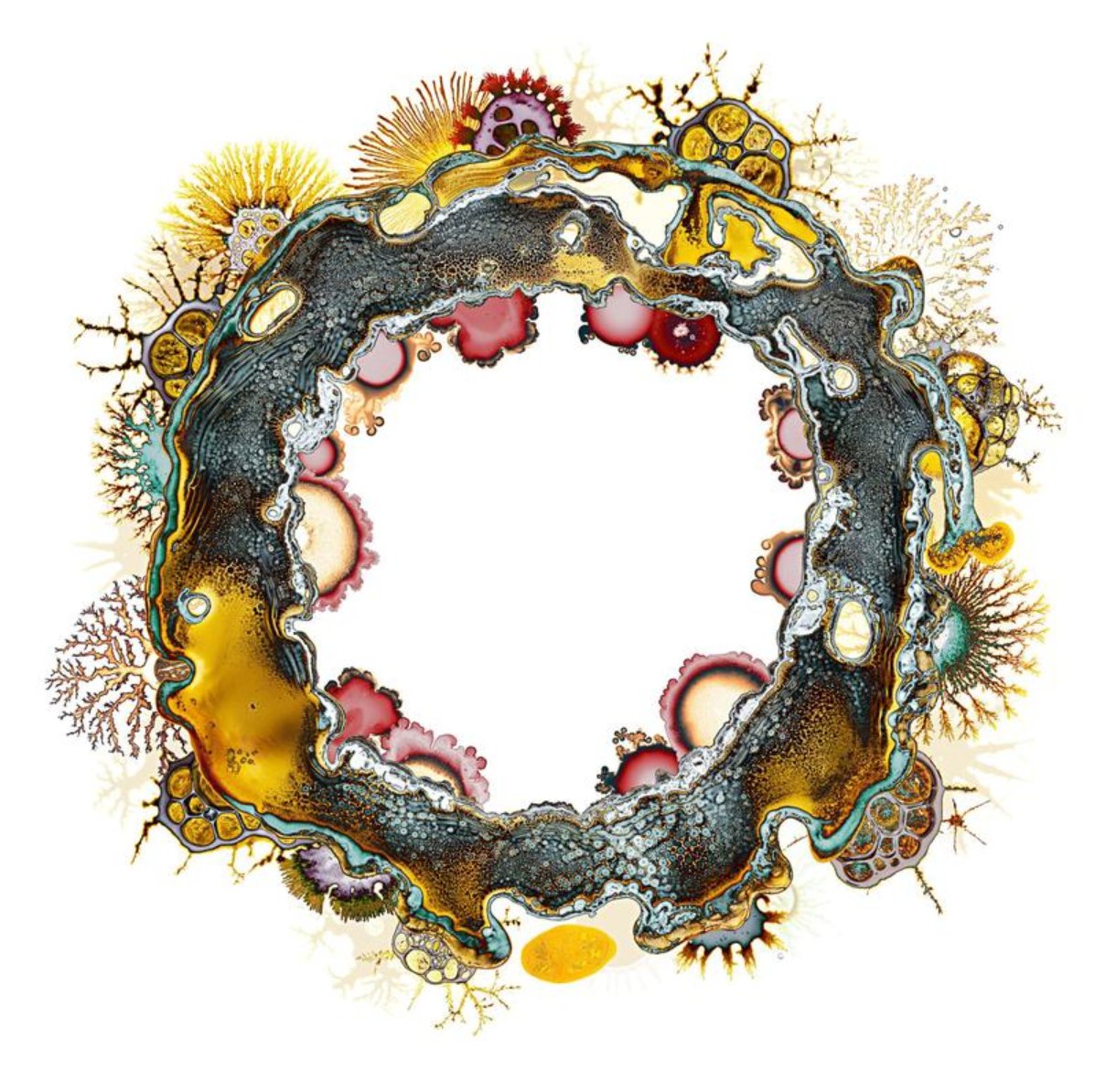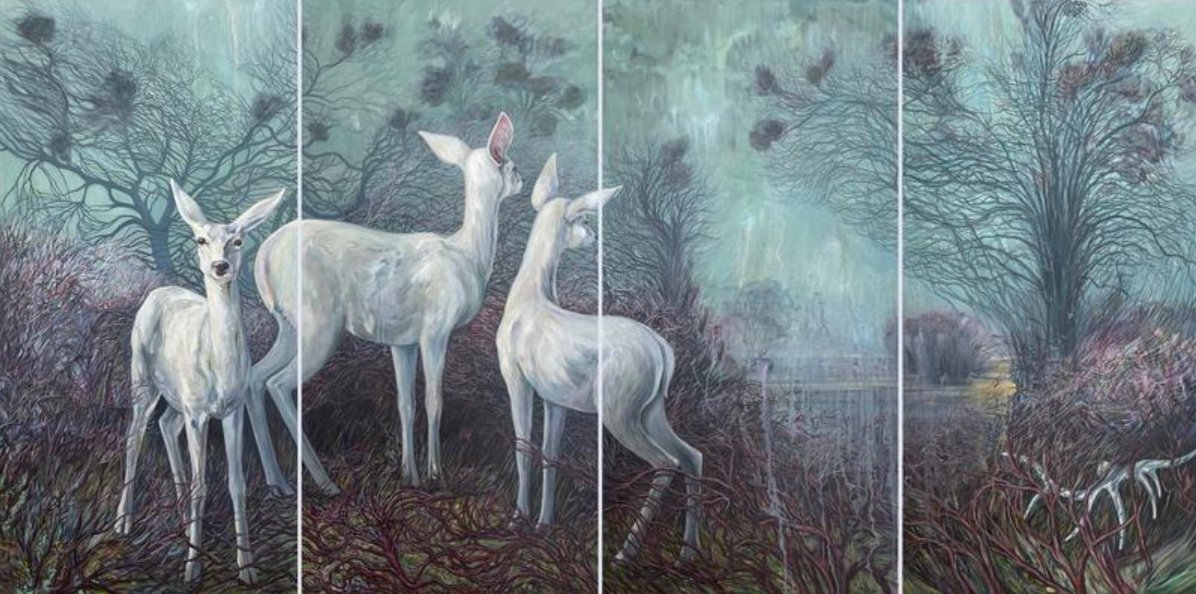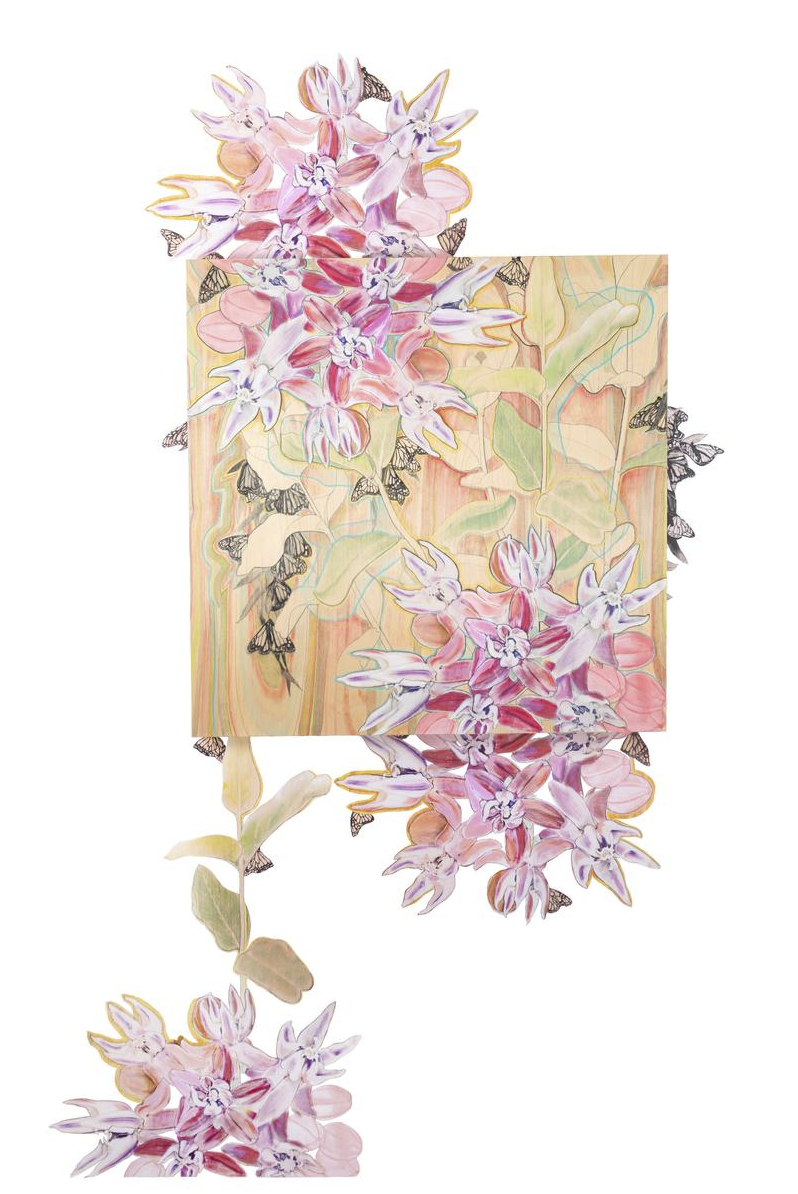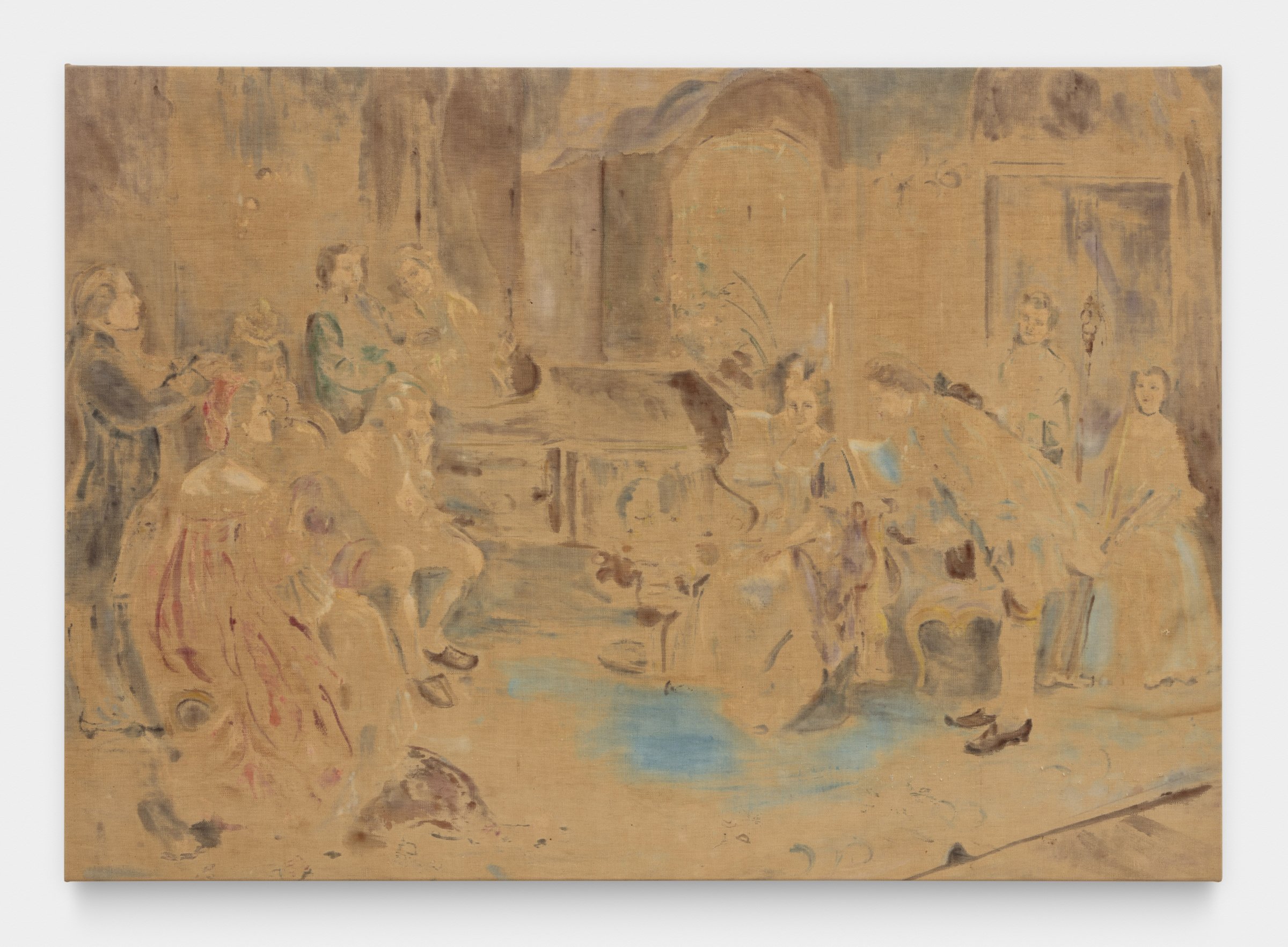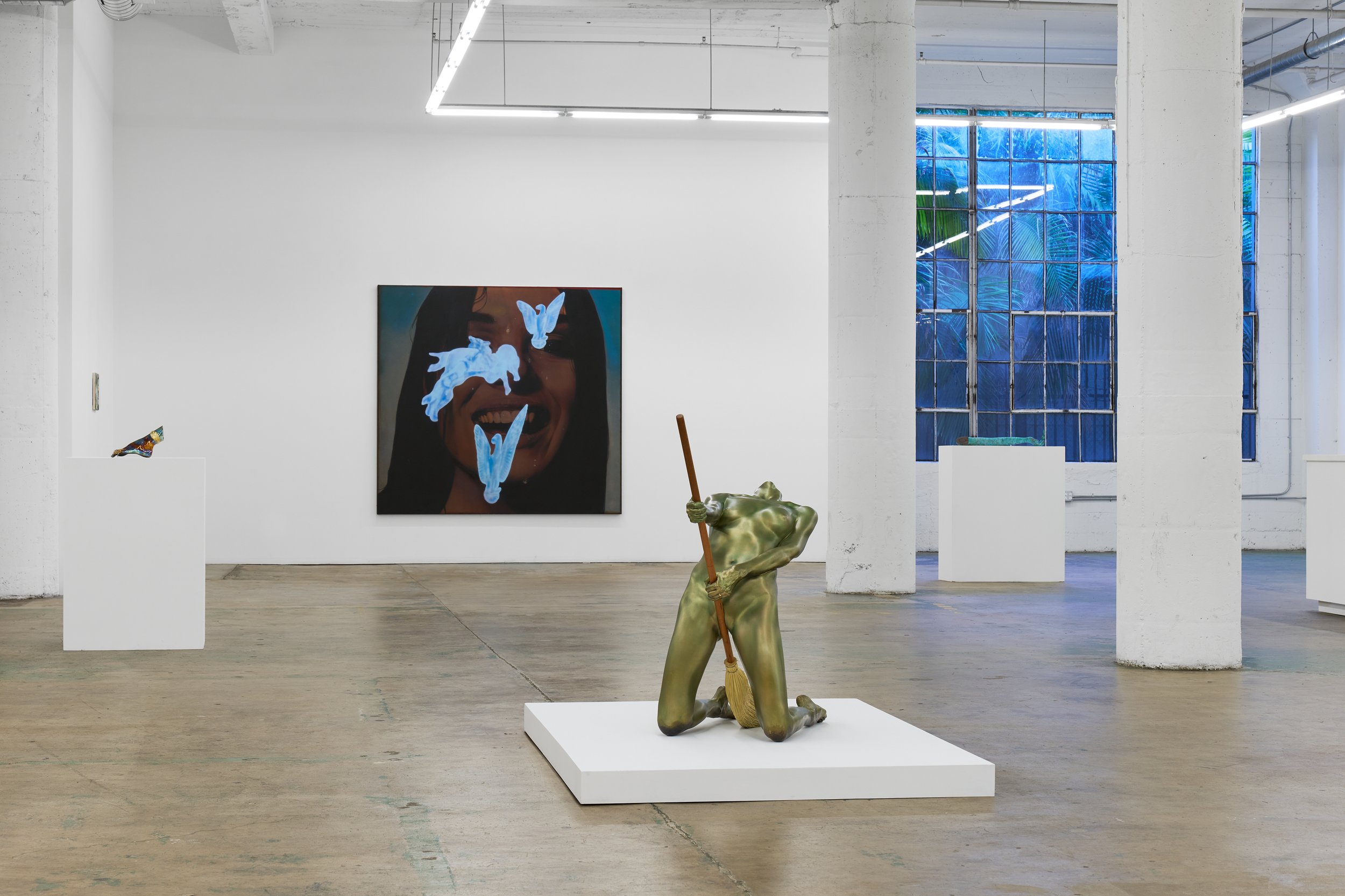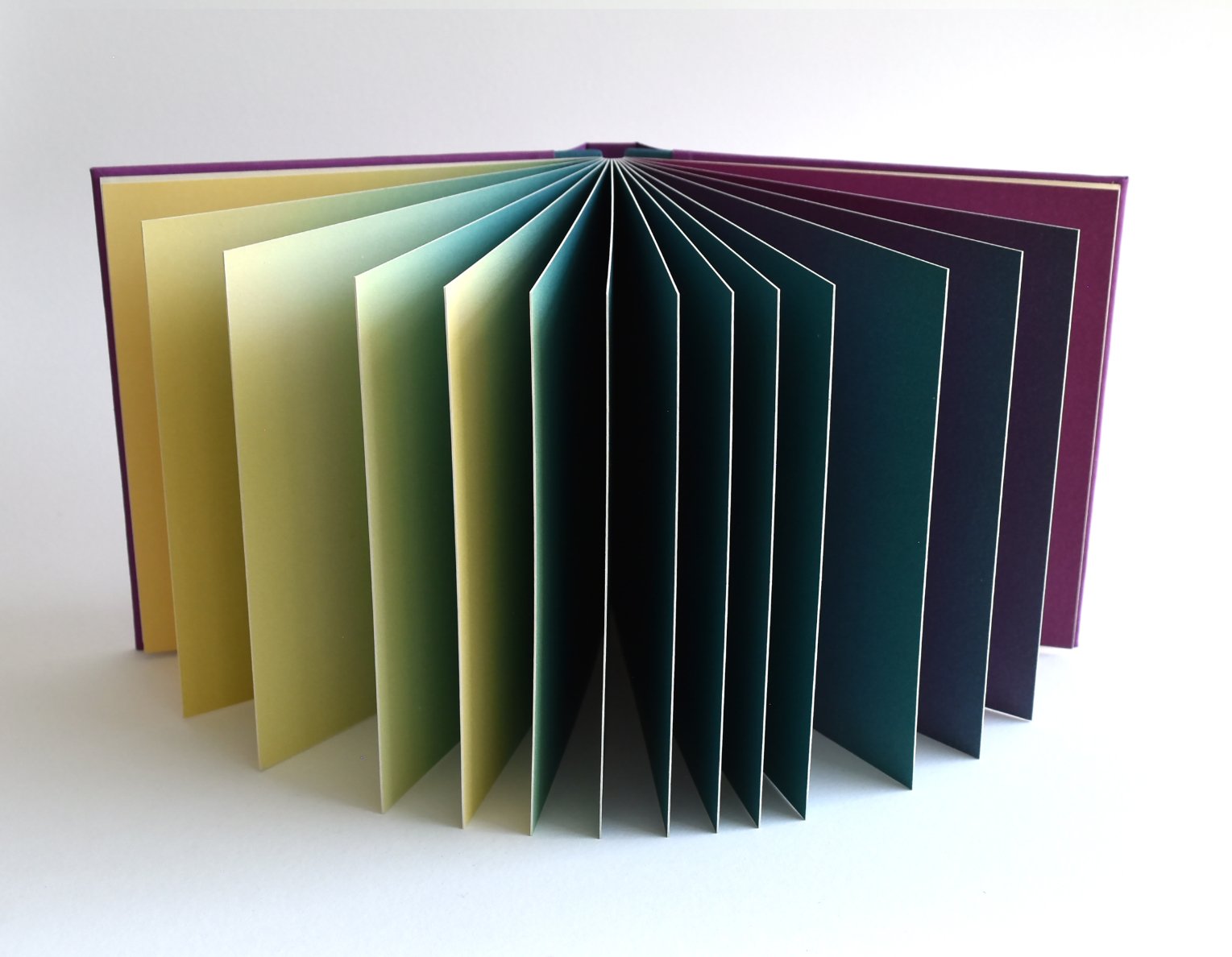Click here to read more.
Lefty Out There "Tempus" @ Maddox Gallery in London
An exploration of time through the lens of growth, energy and artisanship, ‘Tempus’ is Lefty Out There’s most complex and intricately crafted show yet. Envisaging a show entirely in color, his sophisticated palette is intertwined with multidimensional shapes, forms and proportions. Exploring just how far he can push his abstractions, his trademark polymorphs breathe and grow as the exhibition unfolds through more than 30 unique works.Hailing from Chicago, Lefty’s immersion in the city’s buzzing street art scene marked the start of his career-long obsession with patterns. Always chasing perfection, his studio in Los Angeles is part traditional artist’s atelier, part experimental workshop. Harnessing the power of machinery, technology, carpentry and a myriad of different mediums and techniques, the new works reflect the patience and passion Lefty invests in every stroke and contour. Tempus will be on view until May 4th at Maddox Gallery, 12 Berkeley Street, London
Read An Interview Of Kate Mosher Hall On The Occasion Of Her Solo Exhibition @ Hannah Hoffman In Los Angeles →
Kate Mosher Hall, 31,556,952 seconds, 2024
Acrylic and charcoal on canvas
80 x 72 inches (203.2 x 182.9 cm)
I recently visited Los Angeles born-and-raised painter Kate Mosher Hall at her light-filled studio in a bricky industrial area of Glendale. With the 5 freeway buzzing nearby, she walked me through her complex and unique process, which involves silkscreening light-sensitive emulsion over gessoed canvas using anywhere from eight to thirty screens depending on the particular painting, Photoshopping, layers of collage, and paint. It’s a “choose-your-own adventure” as she says, to get the desired effect. To help organize things, she’s created a lexicon: box paintings, hole or mesh paintings, recursion paintings. Some paintings incorporate elements of all styles. Hall, a punk drummer, worked in silkscreen studios for several years before she began UCLA’s Fine Art MFA program. We talked about Never Odd or Even, Hall’s second solo exhibition at Hannah Hoffman, which is currently on view in Los Angeles and the way that the work employs both good and bad math, challenges modes of looking, and the infinite repetition within binary relationships. Read more.
Izumi Kato's Not-Quite-Human Figures Are Apparitions of Coexistence in Perrotin's Inaugural Los Angeles Show
#6
Untitled, 2023
Photo by Kei Okano
Courtesy of the artist and Perrotin ©2023 Izumi Kato
Perrotin inaugurates their new Los Angeles location with an exhibition of work by Japanese artist Izumi Kato.
Imagine, for a moment, that Izumi Kato’s figurative subjects have a life of their own. From the artist’s studio in Tokyo, his subjects have traversed the ocean, crossing the Pacific to emerge in Los Angeles. Making their way to Pico Boulevard, they appear utterly at home in Southern California—a place where one can encounter the extremes of both prehistoric geology and urban modernity, where tar pits coexist with gleaming new buildings, where eternal ocean cliffs abut concrete highway. These binaries of ancient and modern, geological and man-made, are dualities that also coexist in Kato’s work, making his exhibition a fitting choice for Perrotin’s inaugural exhibition in Los Angeles.
Izumi Kato’s exhibition is on view through March 23 @ Perrotin in Los Angeles, 5036 W. Pico Boulevard
Willfully Surrender to the Chaos of Nature in Tali Lennox's Tremors @ Nicodim in Los Angeles
In her first solo exhibition with Nicodim, artist Tali Lennox enlists erupting volcanoes, glowing forests and mystical landscapes to explore the pleasure of submitting to the chaos and the power of nature. Tremors finds a range of female bodies in varying states of capitulation to an onslaught of mother nature’s harshest elements, finding common ground between internal and external states of disorder.
Originally inspired by the German anthology of illuminations Das Wunderzeichenbuch: The Book of Miracles, this collection takes the lead from the book of Renaissance paintings that depict both biblical and folkloric tales with a decidedly apocalyptic flair.
Shells and oysters proliferate the canvases, appearing sometimes as ominous hallucinations and at other times morphing directly into the features of the painting’s subjects, symbolising a surrender and a fusing to nature.
Tremors is on view through April 6 @ Nicodim, 1700 S Santa Fe Avenue #160 Los Angeles, CA 90021
A'Driane Nieves Dismantles the Policing of Emotionality in self-evident truths @ VSF in Los Angeles
A'Driane Nieves, a new world is still possible (so hold onto your radical imagination), 2023. Courtesy of the artist and Various Small Fires, Los Angeles / Dallas / Seoul. Photo credit: Julia Gillard.
A’Driane Nieves’ debut exhibition at VSF, self-evident truths. Combining paintings on canvas and paper with new explorations in neon and audio installation, this ambitious exhibition is also Nieves’ first on the West Coast.
Nieves’ dynamic gestural abstractions extend from a writing practice and the therapeutic potential of movement, composition, and color. A self-taught painter of over a decade, Nieves began making work after a therapist suggested painting might be a somatic path through which the artist could move to overcome the impacts of childhood abuse, particularly emotional suppression. In spite of, or perhaps because of the weightiness of this genesis, Nieves’ paintings often carry an energy of joyful, empowered liberation.
self-evident truths is a wry play on the US Constitution’s famous refrain (“we hold these truths to be self-evident, that all men are created equal...), she asks “whose truths?, self-evident to whom?”
self-evident truths is on view through April 6 @ VSF, 812 N Highland Ave. Los Angeles
Read Our Interview Of Painter Jess Valice On The Occasion Of Her Solo Exhibition @ Almine Rech In New York →
Each and every day we observe thousands of faces online and in person. And with each and every one, we reflexively look for clues to determine how they must feel. It is an empathic impulse endemic to us as social creatures. And yet, regardless of our perpetual, involuntary efforts, we can never be sure that we’ve ascertained any level of truth. It’s this mystery that lies at the heart of Jess Valice’s painted figures. The artist’s initial life path, which was headed toward a medical practice, laid the foundation for an approach to painting that leaves the viewer in a state of quizzical study, lost in the gaze of a subject who was never asking to be diagnosed. The predominant demons and desires of her subjects even seem to elude Valice, as she finds herself reworking each of their faces incessantly until she lands on something that feels honest. For her solo exhibition, Mara, opening today at Almine Rech’s Upper East Side gallery in New York, the subjects in question are at various points of overcoming the part of their egos that obstruct the path to enlightenment, known in Buddhism as Mara. According to Valice, “There is this overwhelming sense of fatigue that I think is typifying our generation, the weight of a spectrum of emotional responses that digital space provokes in us every day… It’s all so complex—this is where the science and melancholia come in—the recognition of this blankness as a widespread response. It’s too much to feel.” Fellow painter and confidante Avery Wheless joined Valice in her studio as the paintings were nearly finished to delve into the making of this new body of work and demystify some of the je ne sais quoi embodied by Valice’s disaffected figures. Read more.
Devon DeJardin "Echoes Of The Past" Opens This Week @ Albertz Benda In New York
Albertz Benda presents the second solo exhibition with the gallery by Los Angeles based artist Devon DeJardin. In this exhibition entitled Echoes of the Past, the artist has reimagined Old Master portrait paintings, redefining a visual language for the traditional genre. DeJardin’s new paintings are the culmination of five years of his exploration into what the artist terms secular ‘guardians,’ who appear as central figures in his compositions. Comprised of geometric shapes assembled into anthropomorphic forms, the guardians have a distinctly modernist feel in their tenuous balance between figure and abstraction: 20th century artists from diverse contexts including Henry Moore, Barbara Hepworth, and Yves Tanguy come to mind as significant inspiration.
In Echoes of the Past, the artist delves further back across art historical eras, interpreting his portraits through the lens of Flemish Primitive and Italian Renaissance artists to the Dutch Golden Age and Spanish Romantic masters. While classical portraiture throughout these epochs focused primarily on royalty and pinnacles of society, DeJardin’s paintings conjure imaginary guardians that protect a wounded society.
The cheerful themes of DeJardin’s earlier work have evolved into a darker, more limited palette, reinterpreting choices by many of history’s greatest artists, including Goya, van Eyck, and Rembrandt. They are conceptual reflections of the era in which the artist has lived as DeJardin’s generation has never known life in a world without war—from the Gulf War and the War on Terror to the ongoing conflicts in the Ukraine and the Middle East. DeJardin metaphorically and physically mines the darkness in society to create his work, using shading and light to subtly tease figures from abstract shapes. The orb-like eyes of his figures appear lighter in tone, signifying a purity of spirit and hope for the future.
As always, his paintings are notable for their meticulous rendering. His figures are so sculptural that they almost seem to emerge from the wall. DeJardin goes straight to the canvas, working without a maquette to depict the figure and background in an organic, liberatory process. In recent years the artist has experimented with framing devices for these figures, including floral, architectural, or landscape imagery. In each of the new canvases, the background corresponds to the era from which the artist reimagined the imagery: six smaller works reflect the intimate and domestic scale of Dutch Golden Age paintings, while two larger vertical works lean on an Italian Renaissance tradition, complete with landscape and drapery surrounding the figures. The show serves as a testament to the enduring power of portraiture as a genre of storytelling, with each painting offering a glimpse into shared human experience across centuries.
On view from March 7 to April 13 at Albertz Benda NYC. 515 W. 26th Street, New York, New York
Emily Ferguson Puts Her Spin on Andersen's Red Shoes @ Half Gallery In Los Angeles
top: Cecile Tulkens
skirt: Mugler couture
photography by Maddy Rotman
styling by Grace Dougherty
hair and makeup by Lilly Pollan
Figures swathed in ribbons as though wrapped in a breeze or a melody, Emily Ferguson borrows from music, cinema, art history and her own biography for this latest exhibition in Los Angeles. The title track of the show is a heavily chiarascuro-ed underpainting capturing an adolescent moment of exuberance, a feeling echoed in “Dancer” albeit a more specified form of activation. The painter had recently rewatched the 1948 movie Red Shoes based on the Hans Christian Andersen story and decided to put her pirouette on this ballet narrative. In real life, Emily considers herself more of a tomboy and likes that her femininity finds a release in these compositions. “Adorned” explores this tension with a young woman sporting a decidedly butch flight cap in the style of Amelia Earhart, but specked with tiny colorful bows, a direct reference to the artists late grandmother who was a seamstress. Perhaps the North Star of the exhibition is a self-portrait done in the style of Alice Neel’s famous nude: a repose of empowerment and vulnerability.
dress: Norma Kamali
tights: Falke
shoes: St. John
How Hans Uhlmann Created New Forms for a New World @ Berlinische Galerie in Berlin
Hans Uhlmann's (1900–1975) abstract metal sculptures and drawings shaped the image of German post-war modernism. Berlinische Galerie’s current exhibition traces his creative periods from the 1930s to the 1970s. Using around 80 works - sculptures, drawings, photographs and archive material - it also examines his role as a curator, university teacher and networker in post-war West Berlin. It is the first comprehensive retrospective in more than 50 years.
Experimental molding is on view through May 13th at Berlinische Galerie, Alte Jakobstraße 124-128, 10969 Berlin.
Branding as Rebellion in THE CARDS YOU WERE DEALT @ Dittrich & Schlechtriem in Berlin
Last week, Monty Richthofen performed THE CARDS YOU WERE DEALT, a corporeal intervention in which he explored the concepts of choice, transgenerational dialogue, and transformation through tattooing. Seven participants were randomly selected. In the project, three texts were presented to the chosen participant. These texts are all accounts of 21st century phenomena. If a participant agreed to get one of the texts tattooed, they then got to choose three other texts for the following participant. The placement and composition of the text were decided collaboratively with the artist. The tattoos form a coherent text piece, a physical exquisite corpse, that is painted on a light box, echoing our individual but interconnected experience. THE CARDS YOU WERE DEALT was first performed in September 2023 and most recently included in the 2023 Gallery Weekend Berlin.
THE CARDS YOU WERE DEALT was performed at Dittrich & Schlechtriem, Linienstraße 23, 10178 Berlin.
Pippy Houldsworth Gallery presents sculpture by late American artist Richard Stankiewicz
Presenting in the Pippy Houldsworth Gallery, a sculpture by late American artist Richard Stankiewicz (1922-2018) in its micro project space, The Box. Constructed in Stankiewicz’s characteristic rusted metal, Man of Parts (c. 1950-59) can be seen as a figural exploration of modernity, in which both materials and people are sacrificed in favour of technological and social ‘progress’.
Unable to afford the fees, Richard Stankiewicz forwent a scholarship to the Cranbrook Academy of Art, Michigan, instead enlisting in the Navy when the United States entered World War II in 1941. Stationed in the Aleutian Islands and Hawaii over the course of the war, Stankiewicz spent his free hours fashioning animal bones and other found materials into his first sculptures. Like Jacob Epstein, who famously altered his Rock Drill (c. 1913–1916) in the shadow of the First World War’s mechanised brutality, Stankiewicz’s experiences during the Second World War appear to have marked him with an ambivalent attitude toward technological innovation and its relationship with human life. The title of the piece presented in The Box, Man of Parts, plays on the bricolage construction of the sculpture and the idiom ‘a man of many parts’ (a multitalented man). A figure formed from discarded scraps of metal, the sculpture hints at the fragmentation of the modern psyche and, perhaps, the trauma of war, which so often returned men home in pieces, literal and psychological.
After being discharged in 1947, the artist travelled to New York City to study at Hans Hofmann's School of Fine Art, only a few years before Judith Godwin, whose work is currently showing in the gallery’s main space. Stankiewicz later made his way to Europe, where he studied sculpture under Ossip Zadkine and painting at Fernand Léger’s Paris atelier. In 1952, after returning to New York, Stankiewicz co-founded the Hansa Gallery with Allan Krapow and other fellow students of Hans Hofmann, including Jan Müller, Jean Follet, and Wolf Kahn. New York’s second artist-run cooperative, the Hansa Gallery regularly presented Stankiewicz’s work until its closure in 1959, and its archives are now in the collection of the Museum of Modern Art, New York. It was in this period that he began working with welded scrap metal, giving new life to the detritus that littered New York’s streets. In these works, Stankiewicz appears to be working through ways that society and the individual might rebuild themselves from the wreckage of industrialisation and successive World Wars.
Throughout the decade during which Man of Parts was made, Stankiewicz’s practice was increasingly celebrated, and he participated in numerous solo and group exhibitions, including Young America 1957at the Whitney Museum of American Art, Irons in the Fire at the Contemporary Arts Museum in Houston (1957), a solo exhibition at the iconic Stable Gallery (1959), and in the 29th Venice Biennale (1958).
Garish Queerness as a Mode of Restoration in Pierre le Riche's New Show @ Ronewa Art Projects in Berlin
In Pierre le Riche’s current exhibition, In Four Places at Once, the artist creates vivid figurative wall tapestries that center his queer identity while reflecting on the complexities of belonging in a contemporary world. Identity is woven into and essential to le Riche’s practice; much of his work has been aimed at challenging norms and associations around gender and sexuality and confronting themes of colonialism and white privilege. The group of artworks on show emerged from a period of internal struggle as le Riche acclimatized to a new environment following his move from Cape Town to Aachen, Germany. In this light, le Riche’s choice of tufted yarn as a material, reminiscent of cozy household textiles, feels fitting to conjure a homesick state of yearning and introspection. Le Riche’s use of craft – elsewhere in his practice he also employs embroidery, sewing, and crochet – tosses out outdated notions of gendered art forms. Through his homoerotic content, le Riche pushes back against the conservativeness of a middle-class, suburban upbringing in Post-Apartheid South Africa. His cartoonish nude figures, some sporting exaggerated genitalia, can be read as playfully provocative and unapologetically gay, testing the boundaries of puritanical sensibilities. Simultaneously, his characters are contorted and dislocated in space, imbued with vulnerability, uncertainty, and longing.
In Four Places at Once is on view through March 28th at Ronewa Art Projects, Potsdamer Str. 91, 10785 Berlin.
Michaela Stark Presents "The Panty Show" in Collaboration with Charlotte Rutherford @ Fondazione Sozzani In Milan
Michaela Stark’s The Panty Show, hosted by Carla and Sara Sozzani, is a hyper feminine and playful, three-part artistic expression that comprises an exhibition, performance, and presentation of her panty collection.
Michaela’s process and practice is confessional and comes from her perspective that she shares with her generation. The Panty Show combines several aspects of her body of work. The show narrates the path she has taken from her early years experimenting with draping on her own body alone in her Paris apartment to how she gained liberation through fashion.
The conceptualization of Panty began as a heavily emotional journey. When her personal work and experimentation with reshaping her body began to get her noticed, this often led to appropriation of her body and her intimacy when collaborating with other artists.
Artists Hans Baumer and John Kacere are the backdrop for the exhibition and performance at The Panty Show. Two male artists who overtly took the female form and its autonomy projecting their own ideas unto it. Stark reverses these outdated attitudes by reclaiming her voice as a female artist and by being the protagonist in her work.
The set for the performance recreates her atelier, a dusty pink chaotic tableau vivant of ribbons and dried flowers. The audience and viewers are invited to join and share her experience. In the set, Michaela dresses her model, Yasmin El Yassini, who acts as her human doll. She dresses Yasmin in her body morphing corsetry, transforming her body completely, and then stages her almost lifeless body for photographs.
For her second collaboration with Charlotte Rutherford, Stark remarks on the photographer’s ability to see the fantasy in everyone who steps in front of her camera and capture their unique energy as well as to foster an environment where everyone can act with agency over their body’s representation.
The final act of The Panty show showcases a series of lingerie-esque garments. Stark created ten sculptured dolls made out of tulle, using couture corsetry techniques and crinoline to give structure.
Her notebooks documenting her process are also on display, giving insight to her practice.
The Panty Show is on view through February 25 @ Fondazione Sozzani Vis Tazzoli 3, Milan
Intimacy, Intensity and Sensuality Are Magnified in Zoë Ghertner's Held in the Palm @ Zodiac Pictures in Los Angeles
Installation view courtesy of the artist and Zodiac Pictures.
Zoë Ghertner’s Held in the Palm dutifully maintains a level of intensity with all of her subjects, exploring and releasing their associative experiential qualities within the still image. With such a meticulous focus, rippling patterns or grainy textures become revealed in places where these qualities might otherwise go overlooked. Using color, texture, and light, Ghertner emphasizes the formal properties of her medium and exploits its immediacy. In some photographs, the artist toys with her compositions to soften and distort the final image—imparting a hazy, gooey, or warming sensation upon the viewer of the finished work. In these final photographs, time is ultimately suspended as each subject becomes an abstraction. Read more.
Held in the Palm is on view through March 23 @ Zodiac Pictures, 145 Bay Street #9 Santa Monica, CA
[REVIEW] Nurturing Nature in Lost Wild: Art on the Edge of the Anthropocene @ Whitney Modern in Los Gatos
text by Chimera Mohammadi
How do we nurture the force that created us? This seemingly paradoxical question defines Lost Wild, the group show on view at the Whitney Modern in Los Gatos. The show grapples with various such paradoxes tethered to our relationship with nature: Keith Petersen’s breathtaking photography of chemical reactions claims organic aesthetics through inorganic means, and Karen Olsen-Dunn’s otherwise conventional landscapes glitch and freeze off the canvas and out of the realm of recognition. Dean Bensen and Demetra Theofanous’s glass leaves and bird nests solidify typically flexible structures into embodied fragility, reminiscent of the environmental precariousness that defines our current global epoch. After luxuriating in these contradictory states, the show sets about to address that core question of nurturing, calling in motifs of youth, restoration, and lushness. Tamera Avery’s tenderly rendered masked subjects are at once children and revolutionaries, often modeled after her own son. Marie Cameron’s paintings cope with climate change through a fantastical fairy tale lens, while Sheila Metcalf Tobin’s burst out of the confines of the canvas in radiant, sun-dappled celebrations of natural nostalgia.
Lost Wild is on view through March 30th at Whitney Modern, 2nd Floor of 24 N Santa Cruz Ave 2nd floor, Los Gatos, CA 95030.
The Incarnation of Desire is Brought to You by A Tender Limb @ Reisig and Taylor Contemporary in Los Angeles
Image courtesy of Reisig and Taylor Contemporary.
Reisig and Taylor Contemporary is presenting A Tender Limb, a group exhibition of works by Los Angeles-based artists Ibuki Kuramochi, Marley White, and Allison Arkush. The exhibition includes prints and a sculptural video installation by Kuramochi; mixed-technique and metal sculptures by White; and, mixed-media and ceramic pieces by Arkush.
Recontextualizing ‘everyday' interactions with items, furnitures, images, screens, trinkets, skins, figments, tangles, tools, morsels and other abeyant entities that congeal or contract as soon as someone looks (away), the exhibition asks how bodies make-room for objects through desire and affection—through taste. But it also asks how conditioned desires, affections, and tastes for objects make-room for (specific types of) bodies.
A Tender Limb is on view through February 24 @ Reisig and Taylor Contemporary, 2680 South La Cienega Blvd, Los Angeles, CA 90034
Time is Stretched Through Muted Tones in Happy Phantom @ Lowell Ryan Projects in Los Angeles
Erin Trefry, Causeway across the sea, 2024. Images by Charles White at JWPictures.com, courtesy of the artist and Lowell Ryan Projects.
Lowell Ryan Projects presents Happy Phantom, an exhibition by Los Angeles-based artist Erin Trefry. Comprised of a series of eleven figurative paintings in muted tones, Trefry continues her exploration of sentiment, time, and figuration particularly in relation to familial narratives and relationships.
In this exhibition, Trefry presents her great-grandmother’s paintings, which were originally created in the late 19th century, and depict figurative scenes of romantic settings, exotic locales, and fantastical narratives. These works were passed down through the generations eventually landing in Trefry’s possession. In Happy Phantom Trefry subverts the imagery of her late relative, the paintings are presented stretched in reverse so that the viewer is only able to see the backside of the works where the paint has bled through the fabric. Behind the paintings, a layer of muslin conceals the surfaces of the original paintings.
Happy Phantom is on view through March 2 @ Lowell Ryan Projects, 4619 W Washington Blvd., Los Angeles, CA 90016
Feel the Out-of-Body in Disembodied @ Nicodim in Los Angeles
Installation view of DISEMBODIED. Image courtesy of Nicodim.
Isabelle Albuquerque / Liang Fu / Shana Hoehn / Rae Klein / Agnieszka Nienartowicz / James Owens / Daniel Pitín / Qian Qian / Nicola Samorì
Curated by Ben Lee Ritchie Handler
DISEMBODIED builds and continues conversations around the violence, ecstasy, and epiphany within out-out-body experiences as-seen from the perspective of those on the ground—the leaps of faith we take to believe those who say their souls depart while their bodies remain. The works in the exhibition cover a wide swath of allegorical and tangible disembodied states, including the spiritual, the telegraphic, the psychedelic, the dissociative-induced, artificial intelligences, and alien encounters.
DISEMBODIED is on view through February 17 @ Nicodim, 1700 S Santa Fe Avenue, #160, Los Angeles, CA 90021
[REVIEW] Queer Routes to Restoration in The Embodied Press @ Kala Art Gallery in Berkeley
text by Chimera Mohammadi
“I lingered in front of the bar and felt eyes search my face.” As the words flit across an uncanny array of printed eyes in Malic Amalya’s short film “Flyhole,” Amalya confines in language the current that unites the work in The Embodied Press: Queer Abstraction and the Artist’s book, a touring exhibition curated by Anthea Black which has just finished its Berkeley stop. The show consists of a glorious collection of Queer aesthetics that question whether they want to be seen and ultimately insist upon it, considering the tenuous relationship between Queerness and observation without compromising the Queer right to be seen. The space where Queerness and spectacle overlap has often held violence: The Embodied Press is a reclamation of that space, thrusting the historic traumas of the Queer community into the spotlight while soothing the resulting discomfort with self-owned Queer spectacle. Lyman Piersma’s delicate, heartrending recordings of life during the AIDS epidemic and Lukaza Branfman-Verissimo’s brutally raw love notes and protest poems imbue the space with a revolution-inspiring pathos. Kate Laster’s kaleidoscopic collages suspend themselves in space like bursts of visual jazz, and radiant books of wordless color gradients by Nicholas Shick embody the transcendent euphoria of gender transition. Married couple Miller and Shellabarger’s hazy fields of pastel erotica pepper the space like escape hatches, doors into a welcoming party, while their massive paper dolls cordon off corners for “Flyhole” and Nadine Baritueau’s “Au Revoir” to quietly question the paranoia of being seen and the appeal of disappearance.
The Embodied Press is on view through February 9th, 2024, at Kala Art Gallery at 2990 San Pablo Ave, Berkeley, CA 94702.








